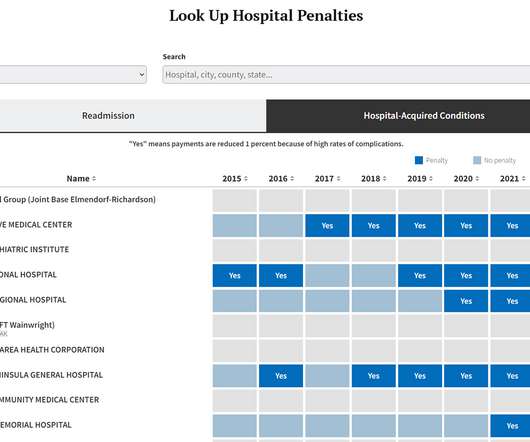Health Care Paradox: Medicare Penalizes Dozens of Hospitals It Also Gives Five Stars
KHN
FEBRUARY 8, 2022
The federal government has penalized 764 hospitals — including more than three dozen it simultaneously rates as among the best in the country — for having the highest numbers of patient infections and potentially avoidable complications.















Let's personalize your content